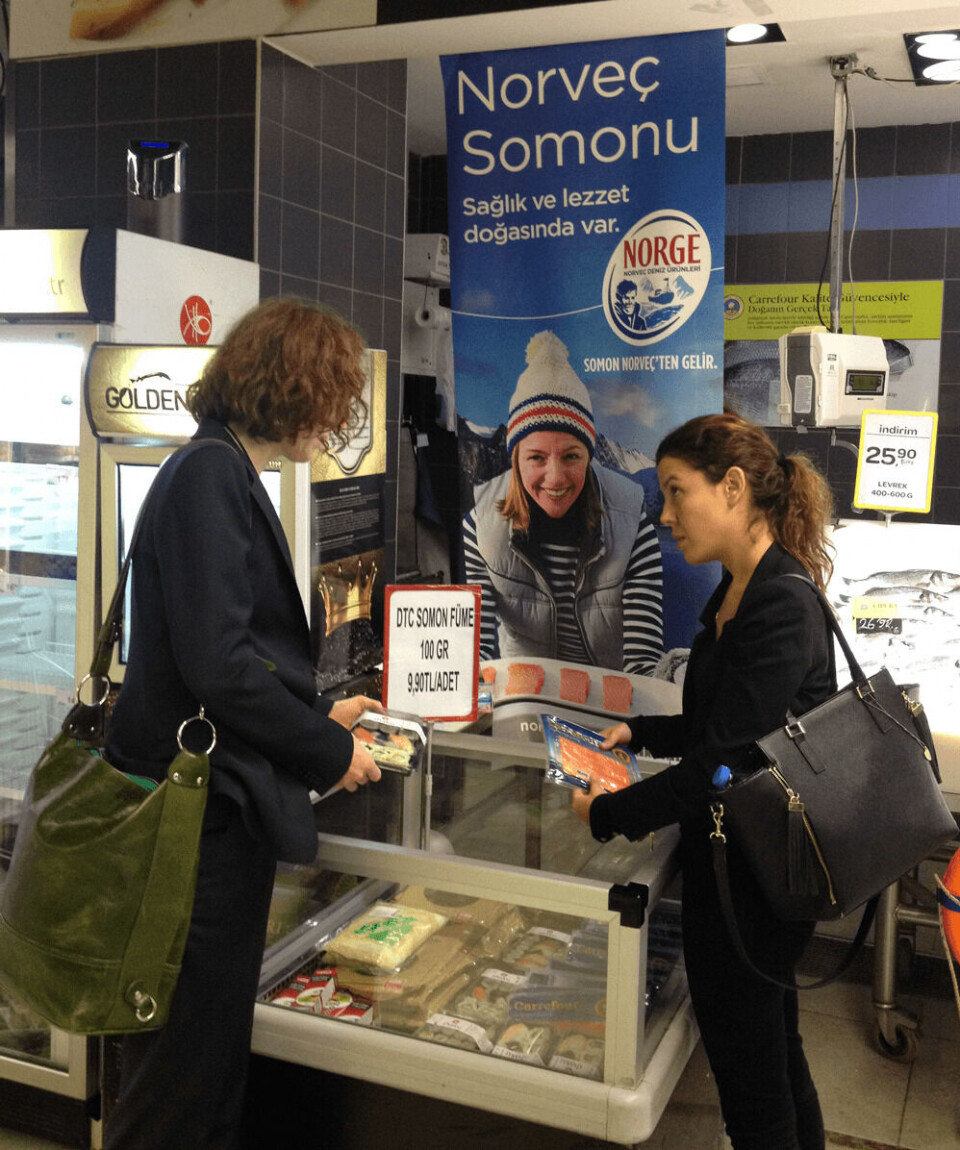
Turks get taste for Norwegian salmon
Turkey imported 8 thousand tonnes of Norwegian salmon in 2015 – more than double the level of five years ago.
According to a new study by Nofima, there is scope to increase this even further – with both a crisis in Turkey’s own fisheries and a modest aquaculture industry making the country more dependent on imports.
Secondly, a growing part of the population is concerned about eating health food and wants to replace many of the traditional meat dishes with seafood.
“Traditionally, Turks buy their fish from the fishmonger in the street, but today modern supermarket chains have first class fish counters with a large variety of fish and seafood,” says Gøril Voldnes, a scientist at Nofima.
Over the last few years, statistics have shown a marked growth in fresh salmon imports. This can be partly due to the fact that it is good to grill, which is very popular in Turkish cuisine. In addition, the sushi trend has started to take off in Turkey and here Norwegian salmon is one of the main ingredients, the scientist explains.
Nofima has looked at the opportunities and challenges for Norwegian seafood in Turkey. As far as challenges go, the Turks in general eat little seafood, and have limited knowledge about fish.
As Voldnes explains: “Obviously this varies depending on how near the coast they live, but on average the amount consumed is only six kilograms of seafood per person per year. It is low compared to Norway where we eat around 40 kilograms of seafood per person per year.
“The lack of knowledge of fish has even created the myth that fatty fish, combined with dairy products, can be so dangerous that one can die from it. Thus, to increase consumption information and promotional campaigns are needed that encourage consumers to adopt new eating habits. In addition, the consumers prefer fresh fish and are used to buying whole, portion sized fish with heads and gills so that they can check the freshness themselves. At fish markets we saw that they would often wring the gills to see how fresh the fish was. This can be a challenge for bigger fish. There are also some non-tariff barriers to trade with a Turkish bureaucracy that is constantly making up new rules.”
Many Turks have already acquired a taste for Norwegian salmon and its popularity is increasing. This has resulted in Marine Harvest establishing themselves in the country in 2015, while Lerøy has been in Turkey for longer.
“It is the fresh salmon that is Norway’s advantage in Turkey. If the Turks should start to ask for frozen fillets, the Norwegian salmon would face tough competition from, for example, Chile. Norway can, as the sole exporter, transport fresh salmon to Turkey by road, and therefore has a huge advantage in this market which prefers fresh seafood,” Voldnes explains.
// // 3e3;case"diversity":return g.fillText(h(55356,57221),0,0),c=g.getImageData(16,16,1,1).data,d=c[0]+","+c[1]+","+c[2]+","+c[3],g.fillText(h(55356,57221,55356,57343),0,0),c=g.getImageData(16,16,1,1).data,e=c[0]+","+c[1]+","+c[2]+","+c[3],d!==e;case"simple":return g.fillText(h(55357,56835),0,0),0!==g.getImageData(16,16,1,1).data[0];case"unicode8":return g.fillText(h(55356,57135),0,0),0!==g.getImageData(16,16,1,1).data[0]}return!1}function e(a){var c=b.createElement("script");c.src=a,c.type="text/javascript",b.getElementsByTagName("head")[0].appendChild(c)}var f,g,h,i;for(i=Array("simple","flag","unicode8","diversity"),c.supports={everything:!0,everythingExceptFlag:!0},h=0;h// // <link rel="stylesheet" type="text/css" media="all" href="http://nofima-326d.kxcdn.com/wp-content/themes/nofima/css/noscript.css?ver=1468217772" />























































